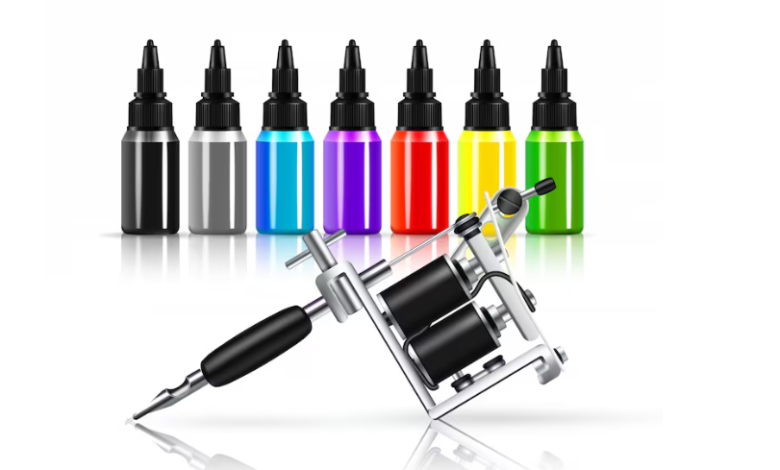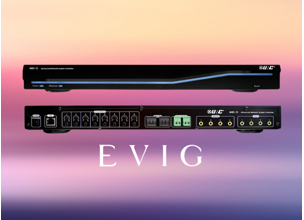Reasons Printer Ink Is Expensive

The High Cost of Research and Development
You know, when you buy a printer, you’re not just getting a box with some plastic and wires. There’s a whole lot of brainpower and money that goes into making that thing work, especially the ink. Think about it: companies spend years and millions of dollars trying to get the ink just right.
Innovation in Ink Technology
It’s not like they just grab some colored water and call it a day. They’re constantly working on new formulas. They want ink that dries fast so it doesn’t smudge, but also stays wet enough in the print head so it doesn’t clog. Plus, they’re trying to make colors more vibrant and last longer without fading. This constant push for better ink means a lot of trial and error, and that costs serious cash. They’re also looking at eco-friendly options and ways to make the ink work with different types of paper.
Developing New Printer Models
And it’s not just the ink itself. The printers need to be designed to work with that specific ink. A new ink formula might need a different print head or a new way of feeding the ink. So, when they invent a new ink, they often have to invent a new printer to go with it, or at least update the existing models. That’s a whole other layer of engineering and testing.
Ensuring Compatibility and Quality
Then there’s the whole compatibility thing. They have to make sure the ink works with the printer, the paper, and even the software. If the ink isn’t right, it can mess up the printer, ruin your documents, or just produce really bad prints. So, they do a ton of testing to make sure everything plays nice together. It’s a big job to make sure you get a good print every time, and that takes a lot of research.
Manufacturing Complexities and Quality Control
Precision Engineering of Cartridges
Think about the tiny nozzles in a print head. They’re incredibly small, often just a few microns wide. Making these cartridges requires super precise manufacturing. We’re talking about machines that operate with extreme accuracy to get these parts just right. If even one nozzle is off, you get bad prints, streaks, or no ink at all. It’s not like just pouring liquid into a bottle; it’s a whole process of building these tiny, complex delivery systems.
Strict Quality Assurance Processes
Because of that precision, manufacturers have to check everything. They run tests on batches of cartridges to make sure they work. This isn’t just a quick look-over. They test ink flow, color accuracy, and how long the cartridge lasts.
- Ink flow tests
- Color calibration checks
- Longevity trials
This quality control adds to the cost because it takes time, equipment, and skilled people to do it right. They want to avoid sending out faulty products that will just frustrate customers and lead to returns.
Maintaining Purity of Ink Components
The ink itself isn’t just colored water. It’s a mix of pigments or dyes, solvents, and other chemicals that need to be just right. If the purity isn’t maintained, the ink can clog the print head or fade quickly.
Keeping the ink components pure means controlling the environment where it’s made and mixed. Dust, air quality, and even the materials used in the containers can affect the final product. It’s a cleanroom kind of operation for the ink itself.
So, all these steps – making the precise parts, checking them, and keeping the ink pure – add up. It’s a lot more involved than people might think, and that complexity gets built into the price.
Brand Protection and Anti-Counterfeiting Measures
It’s a tough world out there for printer ink companies. They spend a lot of time and money making sure you get the real deal, not some cheap imitation that messes up your printer.
Securing Genuine Printer Cartridges
Companies put special features on their ink cartridges to prove they’re authentic. Think holograms, unique serial numbers, or even special chips that talk to your printer. These aren’t just for show; they’re there to make it really hard for counterfeiters to copy them. When you buy a cartridge, you’re often paying for this security. It’s like a little insurance policy against bad ink.
Protecting Intellectual Property
Printer manufacturers have patents on their ink formulas and cartridge designs. This means they have exclusive rights to make and sell them. When someone else makes a copy, they’re infringing on these patents. It costs a lot to defend these patents, and that cost gets passed on. They have to keep innovating and protecting their designs, or anyone could just copy their work.
Combating Low-Quality Replicas
Counterfeit ink often uses cheaper, less pure ingredients. This can lead to poor print quality, clogged print heads, and even damage to your printer. Companies invest in testing and legal action to stop these fakes from reaching the market. They also educate consumers about the risks of using non-genuine ink. It’s a constant battle to keep these inferior products off the shelves and out of your printer.
The Business Model of Printer Manufacturers
Offsetting Hardware Costs
Many printer manufacturers operate on a business model where the initial cost of the printer itself is kept surprisingly low. Think about it – you can often buy a decent home printer for less than a hundred dollars, sometimes even less. This seems like a great deal, right? Well, it’s a strategy. The real money for these companies isn’t made on the printers; it’s made on the ink you buy later. They sell the hardware at a minimal profit, or sometimes even at a loss, to get you hooked into their ecosystem. It’s a bit like selling a razor cheaply and then making money on the blades. So, when you wonder why is my printer printing blank pages, it might be because the printer is designed to encourage ink purchases.
Revenue from Consumables
This is where the profit really rolls in. Printer ink cartridges are sold with a significant markup. The cost of the plastic cartridge and the ink inside is a fraction of what you pay. This recurring revenue stream from ink and toner is vital for the manufacturers. They invest heavily in research and development, and these consumable sales help recoup those costs and fund future innovations. It’s a continuous cycle. If you’re constantly buying new cartridges, you’re directly contributing to this model. Sometimes, if you’re having issues like why is my printer printing blank pages, it might even be a subtle nudge to buy a new cartridge, even if the old one isn’t completely empty.
The Role of Printer Cartridge Suppliers
Beyond the original equipment manufacturers (OEMs), there’s a whole market of third-party printer cartridge suppliers. These companies often offer compatible or remanufactured cartridges at lower prices. While this can save consumers money, it also impacts the revenue streams of the printer manufacturers. This is why you sometimes see warnings or software updates that can affect the compatibility of non-OEM cartridges. The manufacturers want to maintain control over their profitable consumables market and protect their business model. If you’re looking for alternatives, finding reliable printer cartridge suppliers is key, but be aware that some printers are designed to be more resistant to third-party options, which can sometimes lead to troubleshooting issues or even the dreaded ‘why is my printer printing blank pages‘ problem.
The strategy of selling printers cheaply and making profits on ink is a long-standing practice in the industry. It’s a way for companies to build a loyal customer base that relies on their specific consumables, creating a predictable and substantial income stream over time. This model influences everything from printer design to software updates, all aimed at keeping customers within the manufacturer’s ecosystem for ink purchases.
Distribution Channels and Supply Chain Logistics
Global Network of Printer Cartridge Suppliers
Think about it: printer ink isn’t just made in one place and shipped out. Manufacturers work with a whole web of suppliers all over the world to get the raw materials and components needed for those ink cartridges. This global reach means they can source specific chemicals or specialized parts, but it also adds layers of complexity. Coordinating with different companies in different countries, each with their own regulations and business practices, takes a lot of effort and adds to the overall cost. It’s not as simple as just ordering from the shop down the street.
Warehousing and Transportation Costs
Once the ink is made, it has to get to you. That involves storing it in warehouses, which cost money to maintain, staff, and secure. Then there’s the actual shipping. Whether it’s by truck, train, ship, or plane, moving these delicate items across distances adds up. You have fuel costs, driver wages, insurance, and the risk of damage during transit. These logistical expenses are a significant part of why that little cartridge isn’t cheap.
Maintaining Freshness of Ink
Printer ink isn’t like a can of soup that can sit on a shelf for years. It has a shelf life, and if it’s not stored properly or if it sits around too long, it can dry out or degrade. Manufacturers have to manage their inventory carefully to make sure you get ink that works. This means using climate-controlled warehouses and having systems in place to track expiration dates. It’s another operational cost that gets factored into the final price you pay.
Marketing and Brand Value
Advertising Printer Brands
Printer companies spend a lot of money making sure you know their name. Think about all those commercials and online ads you see. They want you to recognize their logo and associate it with good quality printing. It’s not just about selling printers; it’s about selling the whole system, including the ink. When you buy a printer, you’re often buying into a brand ecosystem. This constant advertising builds familiarity, and familiarity often leads to trust, even if it’s just a subconscious feeling.
Building Consumer Trust
Beyond just ads, companies work hard to make you feel good about their products. They might offer warranties, customer support, or even loyalty programs. This all adds up to building trust. When you trust a brand, you’re more likely to buy their ink, even if it costs more than generic options. They want you to believe that their ink is the only thing that will work perfectly with their printers, and that buying anything else is a risk you shouldn’t take. It’s a psychological game, really.
Perceived Value of Premium Ink
So, why do people pay so much for brand-name ink? A big part of it is what we think the ink is worth. Companies create this perception that their ink is somehow better – it lasts longer, produces sharper images, or prevents printer damage. While some of that might be true, a lot of it is marketing. They position their ink as a premium product, and we, as consumers, often buy into that idea. It’s like buying designer clothes; you’re paying for the name and the supposed quality that comes with it. This perceived value allows them to charge significantly more than the actual cost of producing the ink.
Here’s a look at how brand perception can influence purchasing decisions:
- Brand Recognition: High visibility through advertising makes brands familiar.
- Perceived Quality: Marketing efforts link brand names to superior performance.
- Trust Factor: Warranties and support build confidence in the product.
- Ecosystem Lock-in: Consumers often stick with a brand’s ink to avoid compatibility issues.
So, Why the High Price Tag?
It’s pretty clear now why printer ink costs so much. It’s not just one thing, but a mix of research, fancy chemicals, and the way companies sell printers. They make money on the ink, not always the printer itself. So, next time you’re at the store, staring at those little cartridges, you’ll know there’s more to it than just colored liquid. It’s a whole business model. Maybe it makes you want to print less, or perhaps look for cheaper alternatives. Either way, understanding the cost helps.
Frequently Asked Questions
Why does printer ink cost so much because of research?
Printer companies spend a lot of money figuring out new ways to make ink work better and last longer. They also create new printers and make sure the ink works perfectly with them. This research and creating new stuff costs a lot, which is part of why ink is pricey.
How does making the ink cartridges make them expensive?
Making printer ink cartridges is a very careful process. The parts need to be made with great accuracy. Also, companies have to check everything really well to make sure the ink is good and doesn’t mess up your printer. Keeping the ink pure also adds to the cost.
Why is ink expensive to protect the brand?
Companies try hard to make sure you buy their real ink and not fake stuff. They put special features on the cartridges to stop people from making cheap copies. This protection and stopping bad ink from being sold costs money.
How does the printer business model affect ink prices?
Sometimes, printer makers sell the printers themselves for cheap, or even at a loss. They then make their money back by selling you the ink, which is where they charge more. So, the ink price helps them make money overall.
Why are shipping and storing ink costly?
Getting ink from the factory to stores all over the world involves many steps. Storing the ink and shipping it costs money. They also need to make sure the ink stays good and doesn’t dry out before you buy it, which adds to the price.
Does advertising make printer ink more expensive?
Companies spend money on ads to tell you about their printers and ink. They want you to trust their brand and think their ink is the best. When people believe a brand is good, they are often willing to pay more for it.





